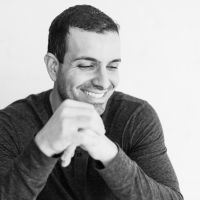
The first thing you learn about photography is how it is all about the light. A good photograph starts with good light. Well, in this tutorial I wanted to encourage everyone to go one step beyond and start getting creative and try new things with light. In this tutorial, we’ll walk you though “light writing” and give you tips and tricks for getting it right in camera.
The picture you see above is not Photoshopped at all, in fact, what you see is straight from the camera. I was shooting a Jewish wedding in Pasadena, CA at the Langham Hotel when this concept hit me. I wanted a creative way to say congratulations or “mazeltov” to the couple when I saw this beautiful night time shot of the hotel. I noticed that right in front of the hotel in between the stairs was a very dark area of bushes which I thought would be perfect to try out some light writing.
In the end, it took me about 4 attempts to get the writing to look decent, but the picture above was the final shot. Here is a step by step tutorial on how it was created.
Setup and Gear for Light Writing
- Camera: Canon 40D
- Lens: 17-40mm f/4L
- Camera Mount: SLIK 615-315 Professional Photo/video Tripod
- Light: Brinkmann Maxfire Dual Xenon Spotlight
- Clothing: All black
Step by Step Instructions for Light Writing
1. Compose – Setup the camera on the tripod and appropriate frame the composition
2. Exposure – Dial in your proper exposure using a 10-30 second long exposure (aka shutter drag). Always use manual for this time of shot). Remember, for a night time scene to come out looking like night time, you need to make sure you are underexposing by 1 or more full stops. This shot was under exposed by 1.25 full stops.
3. Triggering – If you have a wireless trigger, it will make things easier, but if not no worries. Set the camera to a 10 second timer, press the button and start running! Stupidly, I didn’t bring my wireless trigger on this job, so I ended up doing 70 yard sprints to get into position every time I pressed the shutter button. Otherwise, just get into position, and use your wireless trigger.
4. Writing – Once you are in position and the shutter opens, begin writing by pointing the light gun straight into the camera lens. Since you are going to be in front of the camera for so long, it is important you wear black in order to not be picked up by the camera.
5. Writing tips – Eventually you will develop your own style for writing, but here is what I like to do. The key to writing consistent legible letters is your point of reference. For me, I like to use my arm length for the height of the letters. The highest my arm can reach is the top of each letter, while the lowest is the bottom. Also, use a point of reference for each letter spacing. I like to use 1 sideways step as my letter spacing. I also prefer writing backwards from right to left when facing the camera lens. So, for example I would start on the right side, draw the ‘M’ in “Mazel Tov” backwards using the top and bottom of my arm reach for the letter height and then after completing the letter, I would take a decent size step to my left and start again.
6. Try try again – You may need several attempts to get this process down. Remember, you only have 30 seconds to do all your writing. So I would recommend you practice this in a controlled setting before you start busting it out on the job.
Other Ideas and Comments
This is just one way of being creative with light, if you have ideas, share them below with the rest of us!





Get Connected!